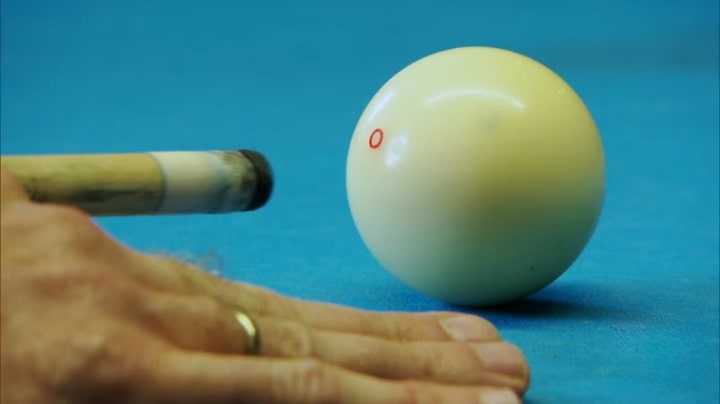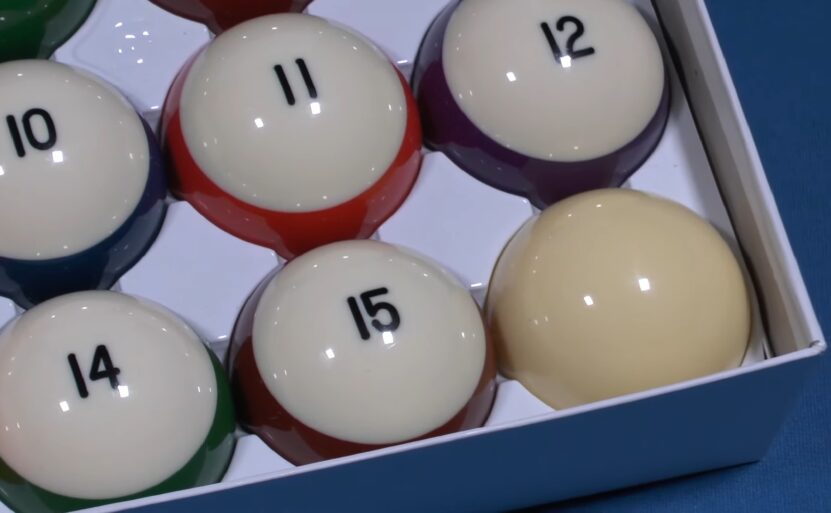Ever since the game of billiards emerged in the 15th century, it has continued to captivate players and onlookers alike. At the heart of the game lies the humble billiard ball – an essential component whose composition has evolved dramatically over the centuries. From ivory to synthetic materials, the journey of billiard balls showcases a fascinating tale of scientific innovation and environmental responsibility.
In this comprehensive blog post, we will explore the captivating world of billiard balls, delving into their composition, history, and manufacturing process. So, without further ado, let’s dive into the fascinating realm of these small, spherical wonders.
The Evolution of Billiard Ball Composition
The Ivory Era

The earliest billiard balls were made from ivory, a dense, hard, and white material derived from the tusks of elephants and other large mammals. Ivory was the material of choice due to its smooth texture, which allowed for a consistent roll and precise control. However, the widespread use of ivory in the production of billiard balls came at a significant cost to elephant populations and the environment. By the mid-19th century, concerns over the sustainability of ivory sources led to a search for alternative materials.
The Celluloid Revolution
In 1865, American inventor John Wesley Hyatt developed celluloid, a semi-synthetic plastic made by dissolving cellulose in a mixture of camphor and alcohol. This revolutionary material allowed for mass production and an end to the dependence on ivory. Celluloid billiard balls, however, were not without their flaws. They were highly flammable and prone to deformation, leading to an inconsistent roll. Additionally, celluloid balls had a tendency to crack or shatter, causing safety concerns.
The Birth of Phenolic Resin
The search for a more stable and safe alternative to celluloid led to the invention of phenolic resin in the early 20th century by Belgian chemist Dr. Leo Baekeland. Phenolic resin is a synthetic polymer produced by polymerizing phenol and formaldehyde in the presence of a catalyst. This material proved to be much stronger, more heat-resistant, and less flammable than celluloid, making it the perfect choice for billiard balls. Today, phenolic resin remains the industry standard for professional-grade billiard balls.
Exploring Modern Billiard Ball Materials

Phenolic Resin: The Gold Standard
As mentioned earlier, phenolic resin is the material of choice for high-quality billiard balls. Its durability, consistency, and resilience make it ideal for professional play. In addition to these qualities, phenolic resin balls offer a very low coefficient of friction, which minimizes wear on the table’s cloth and ensures a consistent roll. A well-known brand of phenolic resin billiard balls is Aramith, which is recognized for its quality and performance by professional players and billiard associations worldwide.
Polyester: The Affordable Alternative
For casual players and budget-conscious consumers, polyester billiard balls offer an affordable alternative to phenolic resin. While not as durable or consistent as their phenolic counterparts, polyester balls are suitable for recreational play and can provide a satisfactory playing experience. However, due to their lower resistance to impact and heat, polyester balls may wear out more quickly and may not roll as consistently.
Acrylic: A Durable Option
Acrylic billiard balls are another option for casual players. Made from a transparent thermoplastic known as polymethyl methacrylate (PMMA), acrylic balls are lightweight, durable, and less expensive than phenolic resin. While they offer an acceptable level of performance for recreational play, they may not provide the same consistency and precision as phenolic resin balls. Additionally, acrylic balls have a higher coefficient of friction, which can result in increased wear on the table’s cloth.
Hybrid Materials: Innovation in the Making
In recent years, manufacturers have experimented with hybrid materials, combining the best qualities of phenolic resin, polyester, and acrylic to create innovative billiard balls. These hybrid balls aim to offer improved performance and longevity, while remaining cost-effective. As research and development continue, we may see new materials emerge that further revolutionize the world of billiards.
The Manufacturing Process: From Raw Materials to Finished Balls
Mixing and Molding
The process of creating billiard balls begins with the careful mixing of raw materials. In the case of phenolic resin balls, phenol and formaldehyde are combined with a catalyst to initiate polymerization. The resulting material is then ground into a fine powder and mixed with pigments and other additives, such as dyes and stabilizers.
The mixture is placed into a mold that determines the size and shape of the finished ball. For a standard pool ball, the mold is typically a two-piece steel or aluminum mold. The material is then subjected to heat and pressure, which causes it to cure and solidify into the desired shape.
Curing and Cooling
After the molding process, the billiard balls are left to cure for a specified amount of time, usually several hours to days, depending on the material and manufacturer’s specifications. The curing process ensures that the balls are hardened and stabilized, resulting in a strong, durable, and consistent final product.
Once the curing process is complete, the balls are removed from the molds and allowed to cool. Cooling must be done slowly and evenly to prevent the formation of internal stresses, which could compromise the integrity and performance of the ball.
Precision Grinding and Polishing
The next stage in the manufacturing process is precision grinding. This step ensures that the balls are perfectly round and uniform in size. High-precision grinding machines are used to remove any excess material and achieve the desired diameter and roundness with an accuracy of up to 0.001 inches.
After grinding, the balls are polished to achieve a smooth, glossy finish. Polishing not only enhances the appearance of the balls but also reduces friction and wear during play. The polishing process may involve multiple stages, using progressively finer abrasives to achieve the desired level of shine and smoothness.
Final Thoughts
From their humble beginnings as ivory spheres to the advanced synthetic materials used today, billiard balls have come a long way in their composition and manufacturing processes. Phenolic resin, polyester, and acrylic balls, as well as innovative hybrid materials, all contribute to the diverse range of options available to players today.
Understanding the materials and manufacturing processes behind billiard balls not only enriches our appreciation for the game but also helps us make informed choices when selecting balls for our own use. Whether you’re a professional player, a casual enthusiast, or simply fascinated by the science and history behind these small, spherical marvels, the world of billiard balls is indeed a captivating one.

